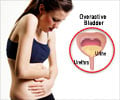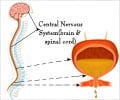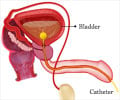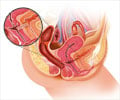A study indicates that anticholinergic medications are similar in efficacy to botulinum toxin in the treatment of urinary incontinence in women.

A study (the Anticholinergic versus Botulinum Toxin Comparison (ABC) study) was carried out to compare the effects of oral anticholinergic drugs with onabotulinumtoxinA in treating urinary urgency in women over a period of 6 months. The women included in the study had at least five episodes of urgency urinary incontinence in 3 days.
Half of the participants of the study were given the oral anticholinergic drug solifenacin at a starting dose of 5 mg daily. They were allowed to increase the dose or later switch over to trospium XR over the next 6 months. The other participants received an injection of 100U of onabotulinumtoxinA into the muscle of the bladder. The participants also received appropriate placebo. The response to treatment was evaluated using the Patient Global Symptom Control (PGSC) instrument.
The participants were followed up for an additional 6 months after treatment to assess the duration of effect of the medications.
A total of 118 participants who received anticholinergic medication and 113 who received onabotulinumtoxinA completed the study.
The results of the study indicate that:
• The effects of the medications were more obvious in women who had more frequent episodes of urinary incontinence.
• The time to initial response was around 1 month in both groups.
• Dry mouth as a side effect of treatment was more common in the anticholinergic group, while more women in the onabotulinumtoxinA group experienced incomplete bladder evacuation and developed urinary tract infection.
• At 6 months, around 70% participants from each group had adequate control of symptoms. However, the treatment effect persisted in lesser number of women taking anticholinergics 6 months after discontinuing treatment.
Thus, though the reduction of the number of episodes of urinary incontinence was similar in the two groups, the choice between the two treatments should be made based on the preferred route of treatment and the side effect profile of the medications.
Reference:
1. Anticholinergic Therapy vs. OnabotulinumtoxinA for Urgency Urinary Incontinence; Anthony Visco et al; NEJM 2012
Source-Medindia















